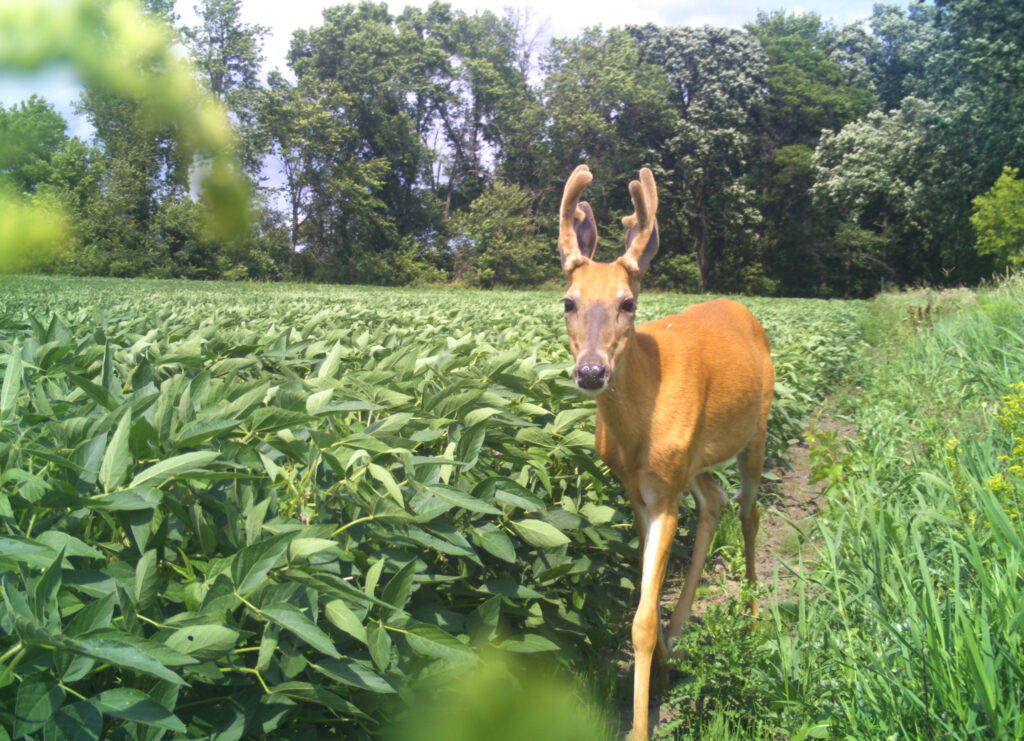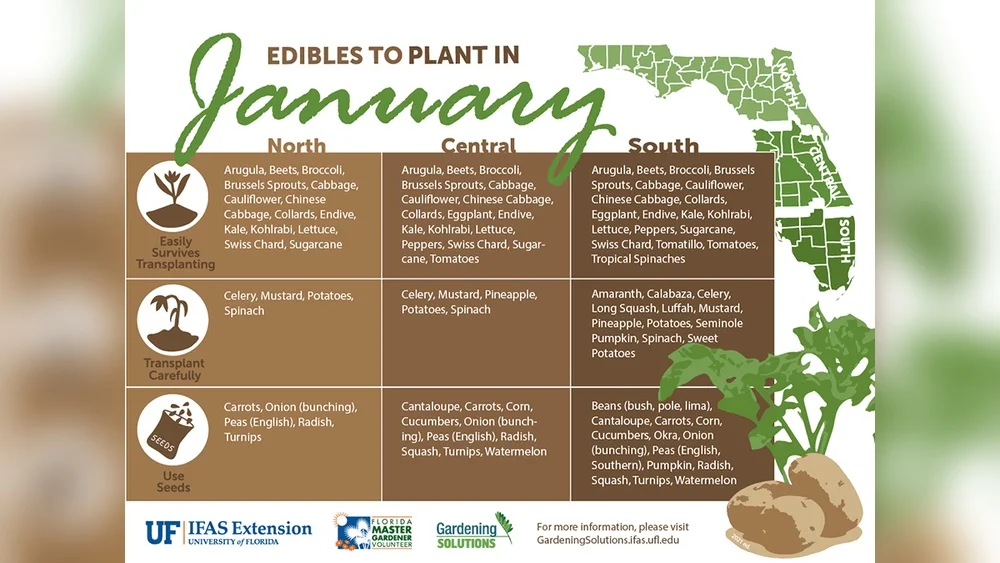Are you ready to get the most out of your soybean crop in Florida? Knowing the best time to plant soybeans is key to boosting your yield and protecting your investment.
Plant too early or too late, and you risk poor growth, lower harvests, and even crop loss. But when exactly should you plant your soybeans to make sure they thrive under Florida’s unique climate? You’ll discover the ideal planting windows, important tips for late planting, and what to avoid to keep your soybean fields healthy and productive.
Keep reading to learn how timing can make all the difference in your soybean success.

Credit: www.revivalgardening.com
Planting Window In Florida
Knowing the right planting window is key for successful soybean growth in Florida. The state’s warm climate allows a flexible planting schedule. Farmers must balance weather, soil conditions, and crop management to optimize yields. Planting at the right time helps soybeans develop strong roots and resist pests.
Optimal Dates From Late April To Mid-june
The best time to plant soybeans in Florida is from late April to mid-June. During this period, soil temperatures rise enough for quick seed germination. Rainfall is usually sufficient, reducing the need for extra watering. Planting in this window boosts the chance of a healthy crop and good yields.
Extended Planting Through July And Early August
Planting soybeans can continue into July and early August in some Florida areas. This extended window suits farmers who need more time or follow early corn harvests. Yields may be lower, but proper care helps maintain crop health. Choosing faster-maturing soybean varieties supports later planting efforts.
Role Of Irrigation And Narrow Rows
Irrigation plays a vital role in late planting success. It ensures soybeans get enough water during dry spells. Narrow rows help by increasing plant density and reducing weed growth. Combined, these methods improve soybean growth and can offset some risks of planting later in the season.
Avoiding Fall Planting
Planting soybeans in Florida during the fall is generally not advised. This timing can lead to problems that reduce the crop’s success. Soybeans thrive best when planted in the warmer months of spring and early summer. Planting in fall exposes the crop to several risks that affect growth and yield.
Low Yield Risks
Soybeans planted in fall often produce lower yields. Cooler temperatures slow down their growth cycle. The plants may not mature fully before colder weather arrives. This incomplete growth results in fewer beans per plant. Farmers typically see less profit from fall-planted soybeans.
Frost Vulnerability
Frost is a major threat to soybeans planted in fall. Young soybean plants are very sensitive to cold. An early frost can kill seedlings or damage leaves. This damage reduces the plant’s ability to grow and produce beans. Frost risk is higher in fall than in spring or summer.
Slow Germination And Growth
Soil temperatures drop in the fall. Cold soil slows soybean seed germination. Seeds take longer to sprout or may not sprout at all. Slow growth makes plants weak and vulnerable to pests and diseases. This weak start often means poor crop performance later on.
Managing Late Plantings
Managing late plantings of soybeans in Florida requires careful planning. The planting window often extends beyond mid-June. Late plantings face challenges like shorter growing seasons and increased pest pressure. Adapting your practices can help maintain good yields even with delayed planting.
Choosing Early Maturity Varieties
Select soybean varieties with shorter maturity groups. Early maturity types finish growing faster. This helps avoid frost and heat stress at the end of the season. Choosing the right variety matches the crop cycle to the available growing time. It improves chances of a successful harvest despite late planting.
Seed Treatments For Protection
Treat seeds with fungicides and insecticides before planting. Late plantings face higher risks from diseases and insects. Seed treatments protect young seedlings during critical early growth stages. This increases seedling survival and reduces damage. Healthy plants develop stronger and support better yields.
Yield Expectations For Late Planting
Yields usually decline as planting dates move later. The growing season shortens, limiting pod and seed development. Late plantings can still produce decent yields with proper management. Adjusting variety choice and seed treatments helps reduce yield loss. Farmers should expect some decrease but can keep crops productive.

Credit: mossyoakgamekeeper.com
Soil And Weather Factors
Understanding soil and weather factors is key to planting soybeans successfully in Florida. These elements affect seed germination, plant growth, and final yield. Florida’s warm climate offers a long growing season, but careful timing is essential. Proper attention to soil temperature, frost risks, and soil preparation improves chances for a healthy crop.
Impact Of Soil Temperature
Soil temperature controls seed germination speed and seedling health. Soybeans need soil temperatures above 55°F to sprout well. Planting too early in cold soil delays growth and increases disease risk. In Florida, soil warms quickly in spring, making late April to mid-June ideal. Monitoring soil temperature helps farmers choose the best planting date for strong plants.
Frost And Weather Hazards
Frost can damage or kill young soybean plants. Florida’s spring frost risk drops after March, but late frosts can still occur. Avoid planting before the last frost date to protect seedlings. Heavy rain and storms can also harm plants by causing soil erosion and flooding. Choosing the right planting window reduces these weather hazards and supports steady growth.
Importance Of Timely Soil Preparation
Well-prepared soil provides a good seedbed for soybeans. Timely tilling improves soil structure and removes weeds. Proper soil moisture is important during preparation to avoid clumps or hard crusts. Fertilizing based on soil tests gives plants necessary nutrients early. Starting soil work too late may delay planting and reduce yields. Early preparation sets the stage for a successful crop.
Techniques To Maximize Yield
Maximizing soybean yield in Florida requires careful attention to planting techniques. Smart choices in row spacing, irrigation, and pest control help plants grow strong. These methods improve plant health and increase overall production. Adapting these practices to Florida’s climate boosts success on your farm.
Row Spacing Strategies
Choosing the right row spacing is key for soybean growth. Narrow rows, about 15 to 20 inches apart, help plants capture more sunlight. This spacing encourages faster canopy closure, reducing weed growth. Wider rows may lower yield by allowing more weed competition. Adjust spacing based on soil type and equipment to get the best results.
Irrigation Practices
Consistent water supply is essential for soybean crops. Irrigate during dry spells to keep soil moist but not waterlogged. Drip or sprinkler systems work well in Florida’s warm climate. Water early in the day to reduce disease risk. Proper irrigation supports healthy root systems and improves pod development, leading to higher yields.
Pest And Disease Management
Protect soybeans from pests and diseases for better harvests. Regularly scout fields to spot early signs of trouble. Use integrated pest management (IPM) to combine cultural, biological, and chemical controls. Rotate crops to reduce pest buildup and disease pressure. Timely treatment preserves plant health and prevents yield loss.

Credit: mossyoakgamekeeper.com
Special Considerations For Deer Forage
Planting soybeans for deer forage in Florida needs special attention. Deer rely on soybeans for good nutrition during certain seasons. Timing the planting affects how well the crop grows and its availability for deer. Planning your soybean planting with deer forage in mind helps provide better food sources for wildlife. Knowing the right time can improve both forage quality and quantity.
Late Planting Benefits
Late planting allows soybeans to grow when deer need food most. Planting in late spring or early summer extends the forage availability into fall. This timing matches the period when deer prepare for winter. Late planting also reduces competition from weeds, helping soybeans grow stronger. It helps farmers manage fields better for both crops and wildlife.
Forage Yield And Maturity Timing
Choosing the right maturity group is important for forage yield. Early maturing soybeans finish sooner, providing food earlier in the season. Later maturing types offer more biomass but take longer to develop. Matching maturity with planting date ensures soybeans reach peak growth when deer feed. Proper timing maximizes yield and keeps forage quality high.
Regional Variations In Planting Dates
Florida’s climate varies from north to south, affecting planting dates. Northern Florida should plant soybeans earlier, around late April to early May. Central and southern regions can plant later, up to mid-June or early July. Adjusting planting dates by region helps soybeans avoid extreme heat and drought. This increases success and provides steady forage for deer across Florida.
Frequently Asked Questions
When To Plant Soybeans In Florida?
Plant soybeans in Florida from late April to mid-June for best yields. Planting through July or early August is possible with irrigation and narrow rows. Avoid fall planting due to cold risks and lower yields. Choose early maturity varieties for late planting.
Can You Plant Soybeans In The Fall?
Planting soybeans in the fall is not recommended due to low yields and frost risks. Plant soybeans from late April to mid-June for best results.
How Much Can You Make Off 1 Acre Of Soybeans?
You can earn $400 to $800 per acre from soybeans, depending on yield and market prices. Average yields range from 40 to 60 bushels per acre.
How Late Can I Plant Soybeans For Deer?
Plant soybeans for deer by mid-June for best results. Late plantings through July or early August reduce yields and require faster-maturing varieties and seed treatments. Avoid fall planting due to frost risk and poor growth.
Conclusion
Planting soybeans at the right time in Florida boosts growth and yield. Late April to mid-June offers the best conditions. Planting too late may reduce yields and increase risks. Choose faster-maturing varieties if planting late. Use seed treatments to protect against pests and diseases.
Avoid fall planting due to cold and frost risks. Timely planting helps keep your crop healthy and productive. Follow these tips for a successful soybean season in Florida.

